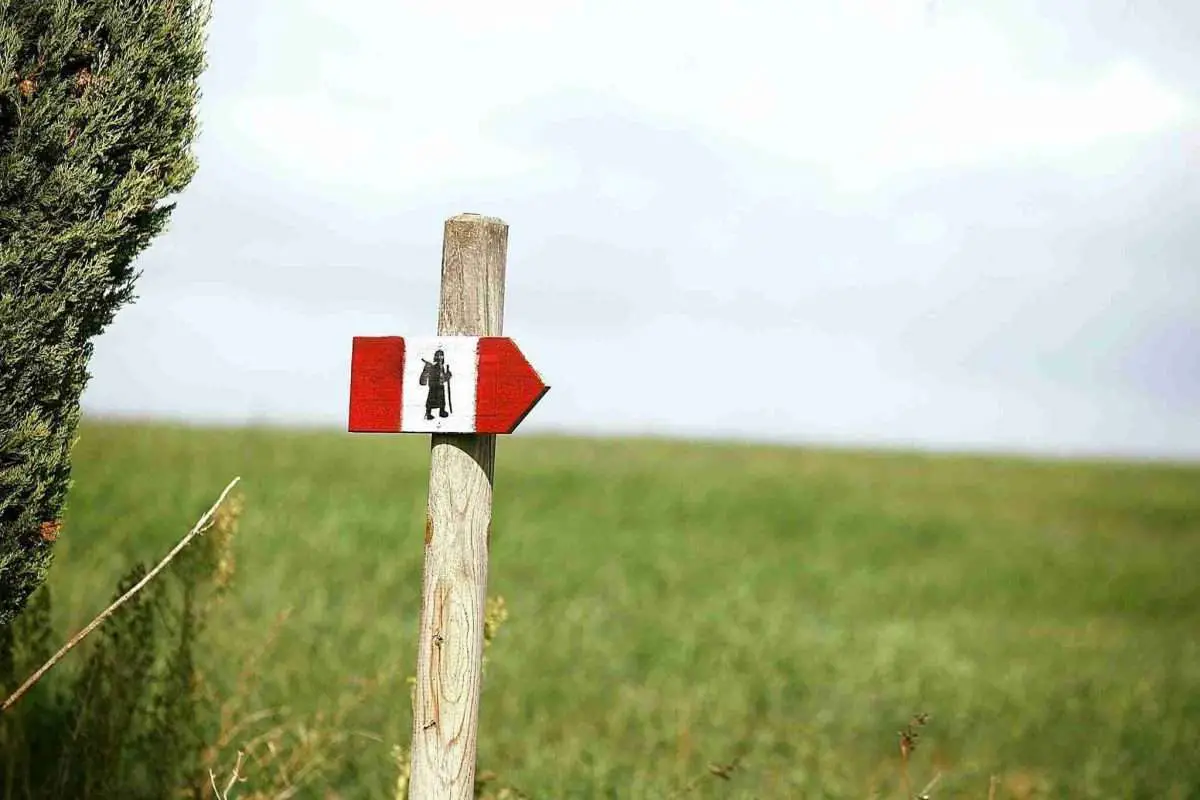Hiking, Biking, and Walking Across Italy: How to Explore the Cammini d’Italia

“Italy has embraced the Via Francigena as none of the other three nations have,” writes Timothy Egan in his New York Times bestseller A Pilgrimage to Eternity: From Canterbury to Rome in Search of a Faith.
As he walks the storied route that traverses England, France, and Italy, Egan explains what makes walking the Italian section of the Via Francigena so appealing:
This country never threw off its Catholicism; monarchs with their own religious agendas were scarce, and Protestants still are. The faith seems stitched to the land; no small space is without a roadside grotto or devotional statue in the courtyard behind gates. People go out of their way to wave, and wish a sincere-sounding ‘buon giorno’ or ‘buon cammino.’
A Pilgrimage to Eternity: From Canterbury to Rome in Search of a Faith
While the Via Francigena may be one of the most famous roads in Italy, it is certainly not the only one. Dante’s Walk through Tuscany and Emilia-Romagna and the routes of Saint Francis of Assisi are but two examples.
In recent years, the Italian Culture Ministry has made a PR push to encourage more tourists to explore Italy’s pathways and pilgrim routes as a way to deal with overtourism in cities and to share tourism profits with less visited areas. Not surprisingly, the age of COVID has sparked greater interest in Italy’s cammini, as they provide a way to practice proper health protocols like social distancing and getting fresh air and exercise through hiking, biking, and walking.
Over the past year, writers at Repubblica, in collaboration with Symbola, IFEL, and other organizations, have explored all 44 cammini d’Italia to help Italians rediscover their own country. These small guides (in Italian, but easily translatable thanks to Google) range from Abruzzo to the Cammino di San Giacomo – Jacobsweg Südtirol with lots of detours in between. In fact, the cammino project also includes visits to 1,435 small towns (piccoli comuni) where visitors can sample as many as 179 DOP/IGP agricultural products at their source.
44 Cammini d’Italia: Full List with Links
The initial links below go directly to the Symbola descriptions of the cammini, complete with links to the corresponding Repubblica articles. I have added official links to the paths, where applicable.
The latter links below typically go to local organizations that promote and maintain the routes or to official tourism boards. And besides offering maps, they often provide insight and context into the roads and towns that they touch.
A lot of the following pages are in Italian or have less-robust English-language companion sites. So if you don’t speak Italian, you will need to turn on auto-translate in your browser.
- Viaggio nella Storia d’Abruzzo (includes five different itineraries through Abruzzo)
- Via Romea Nonantolana | official site
- Via degli Dei | official site
- Cammino di Sant’Antonio | official site
- Cammino di Assisi *
- Cammino di San Vicinio | official site
- Cammino di San Francesco da Rimini a La Verna *
- Via degli Abati | official site | Read more from Italy Magazine
- Cammino di Dante | official site | read more about the Anno Dantesco
- Romea Strata | official site | Read more from Zamberlan
- Iter Aquileiense – Cammino Celeste | official site
- Cammino delle Pievi in Carnia | official site
- Cammino di Francesco *
- Cammino di Benedetto | official site
- Sentiero Liguria | official site
- Alta Via dei Monti Liguri | official site
- Cammino Francescano della Marca *
- Via Romea Germanica | official site
- Sentiero della Pace | official site | Read more about the Alpini Corps, who marched along this pathway
- Via Vigilius | official site
- Via Alpina | official site
- Cammino San Vili | official site
- Sentiero del Dürer | official site
- Cammino Alpedi – Ledro Alps Trek | “ring route that winds through the UNESCO Biosphere Reserve ‘Alpi Ledrensi and Judicaria – from the Dolomites to Garda.'”
- Via Claudia Augusta | official site
- Cammino di Santa Barbara | official site
- Magna Via Francigena | official site | Read more from Italy Magazine
- Trekking del Santo – Cammino di San Nicolò Politi | official site
- Via di Francesco | official site | book *
- Cammino dei Protomartiri Francescani | official site
- Via Lauretana Assisi – Loreto | official site
- Via Amerina – Cammino della Luce | official site
- Di qui passò Francesco *
- Chemin d’Assise | official site
- The Way of St. Francis *
- Via Francigena | official site
- Via Spluga | official site
- Luoghi e Vie della Fede | official site
- Via Priula | official site
- Cammino di San Francesco di Paola | official site
- Sentiero del Brigante | official site
- Vie del Giubileo | official site
- Via Matildica del Volto Santo | official site
- Cammino di San Giacomo – Jacobsweg Südtirol | official site
Cammini marked with * indicate the various sections/itineraries focused around Saint Francis of Assisi. For a good overview of all the routes, check out On the Road with Francis of Assisi: A Timeless Journey Through Umbria and Tuscany, and Beyond.
Also, to coincide with Repubblica’s initiative, a Lonely Planet imprint in Italy updated its guide Italia on the Road with 40 of these paths. This title is currently only in Italian.
Beyond 44 – Even More Italian Routes
Given the ancient roots of the Italian peninsula, many pathways have evolved that connect various aspects of life and history. Wine routes, art routes, pathways that follow the footsteps of saints and poets and warriors. Tourism boards promote hundreds of itineraries, but only some of these have been recognized as “official” pathways, suitable for hiking, walking, and biking.
There are currently 44 official routes in Italy, but that number will change as the many proposed ways meet 11 specific criteria:
- Linear and usable physical paths
- Horizontal and/or vertical signage for each stage
- Safe paths
- “Green” paths – Asphalt roads not exceeding 40%
- Stages with all walking support services
- Online description on reference site of each stage
- Housing and catering services within 5 km of the Path
- Presence of a ‘governance organ’ of the Path
- Ensure supervision and maintenance of the route
- Geo-referencing of the route
- Reference site constantly updated
The Ministry of Cultural Heritage keeps a constantly updating list of paths that have been proposed but not officially recognized.
Featured image via Via Francigena Cultural Route
Last updated on June 27th, 2024Post first published on January 13, 2021







![20-Minute Crash Course on Ancient Roman History [Video]](https://www.italofile.com/wp-content/uploads/video-ancient-rome-in-xx-minutes-scaled-768x432.jpg)




